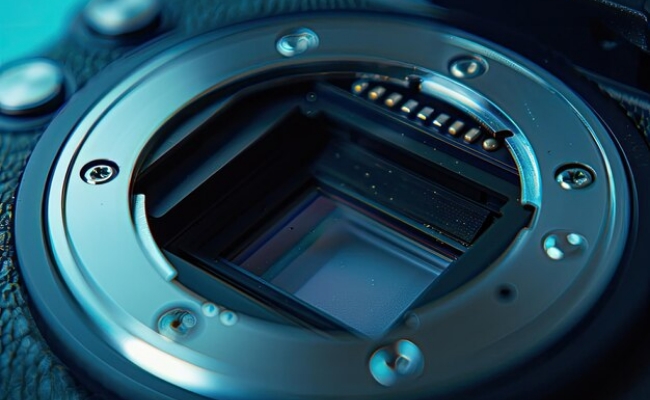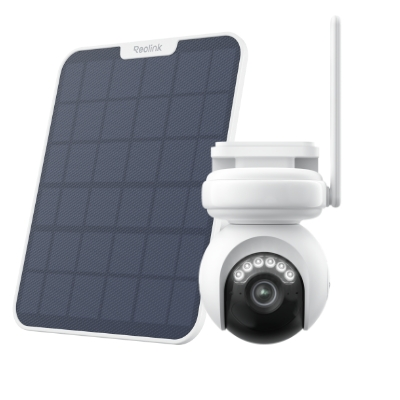Understanding CMOS Image Sensors: Key Features and Advantages

When you take a picture or video using your mobile phone, security camera, or digital camera, the component that senses light and turns it into signals is an image sensor. And most commonly, you will encounter a CMOS image sensor where digital photos are taken.
In this article, we will understand the basics of a CMOS image sensor. We will explain what it is and how it works and also share its pros and cons. We will also share the applications of a CMOS image sensor and explain the difference between CMOS and CCD image sensors.
Basic of CMOS Image Sensor
What is a CMOS Image Sensor?
CMOS stands for Complementary Metal-Oxide-Semiconductor). It is an image sensor made of semiconductors. It captures light and turns it into electrical signals that are converted into images. You will find a CMOS sensor in smartphones, security cameras, DSLRs, and other modern digital cameras and devices.
CMOS Image Sensor Working Principle
A CMOS sensor is made up of many small photodiodes, which are often referred to as pixels. They are arranged in the form of a 2D array.
When light falls on these photodiodes, they generate an electrical signal. The intensity of the signal is proportional to the amount of light. The signal is amplified with the help of transistors connected to each diode.
The sensor reads each and every photodiode and sends the signals to the camera's processing unit. The analog signals are converted into a digital image and a photo is generated.
Types of CMOS Image Sensor
CMOS sensors are classified into two types based on the possible configuration.
One is the Active Pixel Sensor (APS) in which there are multiple transistors or a separate transistor for each pixel. They work better in low light and offer higher frame rates.
The second type is the Passive Pixel Sensor (PPS). It has only one transistor to amplify the signal. That’s why it consumes less power. However, the quality is a bit compromised, especially in low light.
Pros and Cons of CMOS Image Sensors
Pros of CMOS Image Sensors
- CMOS sensors are widely used in digital cameras. They are quite common and easily available.
- They consume lower power compared to some of the alternatives.
- It produces higher-resolution images, which translates to rich details and quality.
- They last longer on battery-powered devices.
- The frame rate is high, so the videos do not have any lag or misinformation. They are smooth.
- It’s an affordable option compared to the alternatives.
Cons of CMOS Image Sensors
- The main issue with CMOS is the noise, especially with the Passive Pixel Sensor.
- Can’t work very well in low-light conditions
- Can have distortion due to the rolling shutter effect
Application of CMOS Image Sensor
Here are some common applications where CMOS sensors are used.
Digital Camera
The digital cameras we use, such as DSLR, have CMOS sensors. Almost all companies, including SONY and Canon, use CMOS sensors. Be it for professional or personal use, CMOS sensors can offer excellent image quality.
Security Camera
Security cameras usually have CMOS sensors. For instance, Altas PT Ultra is a Wi-Fi 6 security camera that contains a CMOS sensor. It records videos in 4K and offers rich details with optimal clarity. At night, it uses Reolink ColorX technology and captures clear and colored footage. It’s a battery-powered camera, but still, it can continuously record for up to eight days.
Industry-leading 4K Continuous Recording Battery Camera
4K UHD Continuous Recording; ColorX Night Vision; Pan & Tilt; Automatic Tracking; All Recordings Stored Locally.
Smartphone/Tablet
Smartphones and tablets also have the CMOS image sensor. Whether it is an iPhone or a Samsung phone, all of them have CMOS sensors under the lens.
VR/AR
VR/AR headsets also use CMOS sensors. The cameras on the headset are used to track the real world. They contain CMOS sensors to understand the environment. The cameras inside the headset also have CMOS, and they are used to capture eye movement.
Medical Imaging
CMOS sensors are widely used in medical imaging. They are used in X-rays, mammography, CT scans, MRI, Ultrasound, etc. It’s also used in endoscopy.
Industrial
For monitoring, inspection, tracking, reading, facial recognition, and dozens of purposes, CMOS sensors are used in industries. For instance, the cameras used for quality inspection have CMOS sensors.
CCD vs CMOS Image Sensor: What's the Difference?
CCD stands for Charged Couple Device. It is another kind of image sensor that works on the charge transfer process. Along with the photodiode, it also has a potential well that accumulates photos and emits electrons (electrical signal).
CCD vs CMOS Sensor Image Quality
CCD is much better in terms of image quality. It can produce better images without distortion and noise. Even in low-light conditions, it produces a quality image because of the potential well and charge transfer process.
On the other hand, CMOS is a bit inferior in quality. But over time it is getting much closer to the quality of CCD. Thus, it can also produce exceptional images. In low-light conditions, it still needs improvement.
CCD vs CMOS Sensor Power Consumption and Cost
CCD requires immense power, which is the reason it is not suitable for battery-powered devices, such as smartphones. Secondly, it costs more compared to the CMOS.
CMOS consumes minimal power and is much more affordable and easily available.
CCD vs CMOS Sensor Speed and Frame Rates
CCD sensors capture fewer frame rates because of low-speed data readout. It can’t cater to too much data because of the speed.
CMOS can capture mode data due to its high speed. It captures more frames per second and offers better video quality.
FAQs
1. Is CMOS camera sensor good?
Yes, CMOS camera sensors are excellent. They are used in your smartphones, digital cameras, security cameras, etc.
2. Do all cameras have CMOS sensors?
Most of the digital cameras have CMOS sensors. CCD has almost been replaced by CMOS in consumer cameras. However, CCDs are still used but only for industrial, scientific, and special purposes.
Conclusion
CMOS image sensors have improved a lot over time and have replaced other types of sensors. Nowadays, you will find CMOS sensors in all consumer devices that have a camera. It is a good choice because of its excellent image quality, low cost, and low power consumption.
Search
Be in the Know
Security insights & offers right into your inbox

